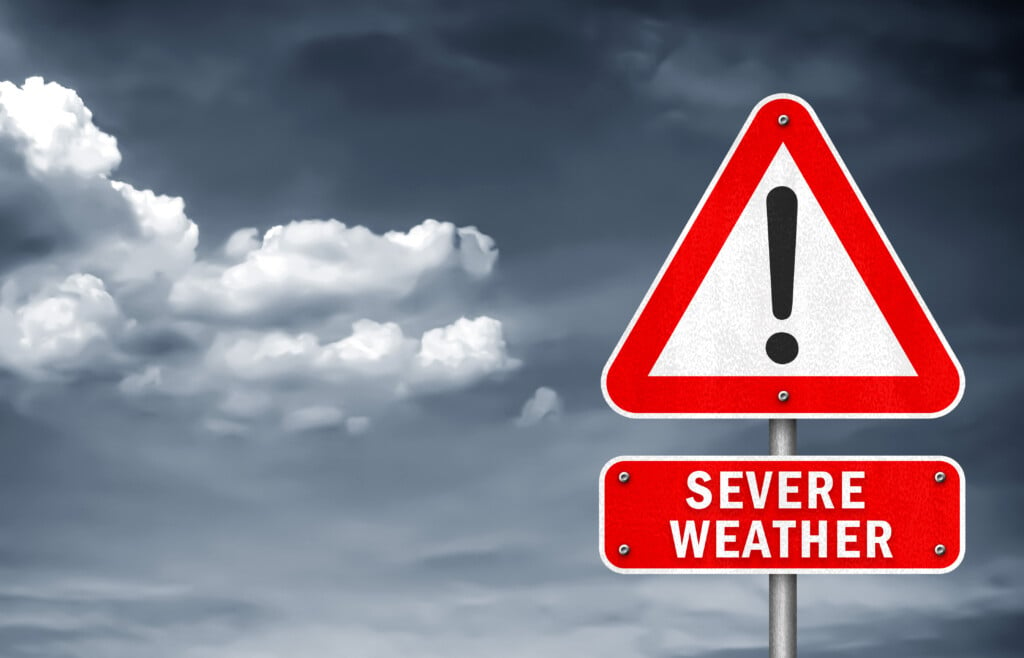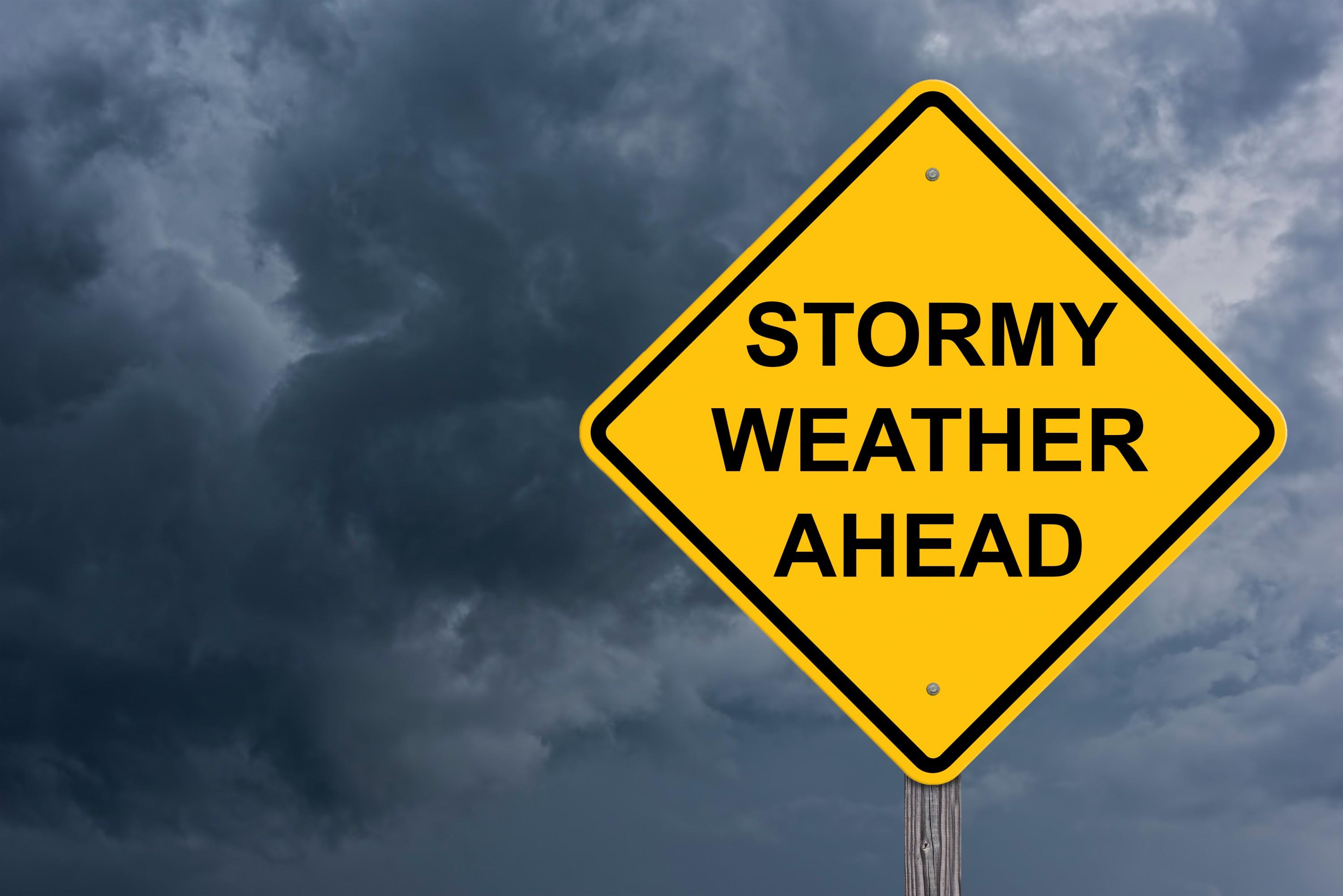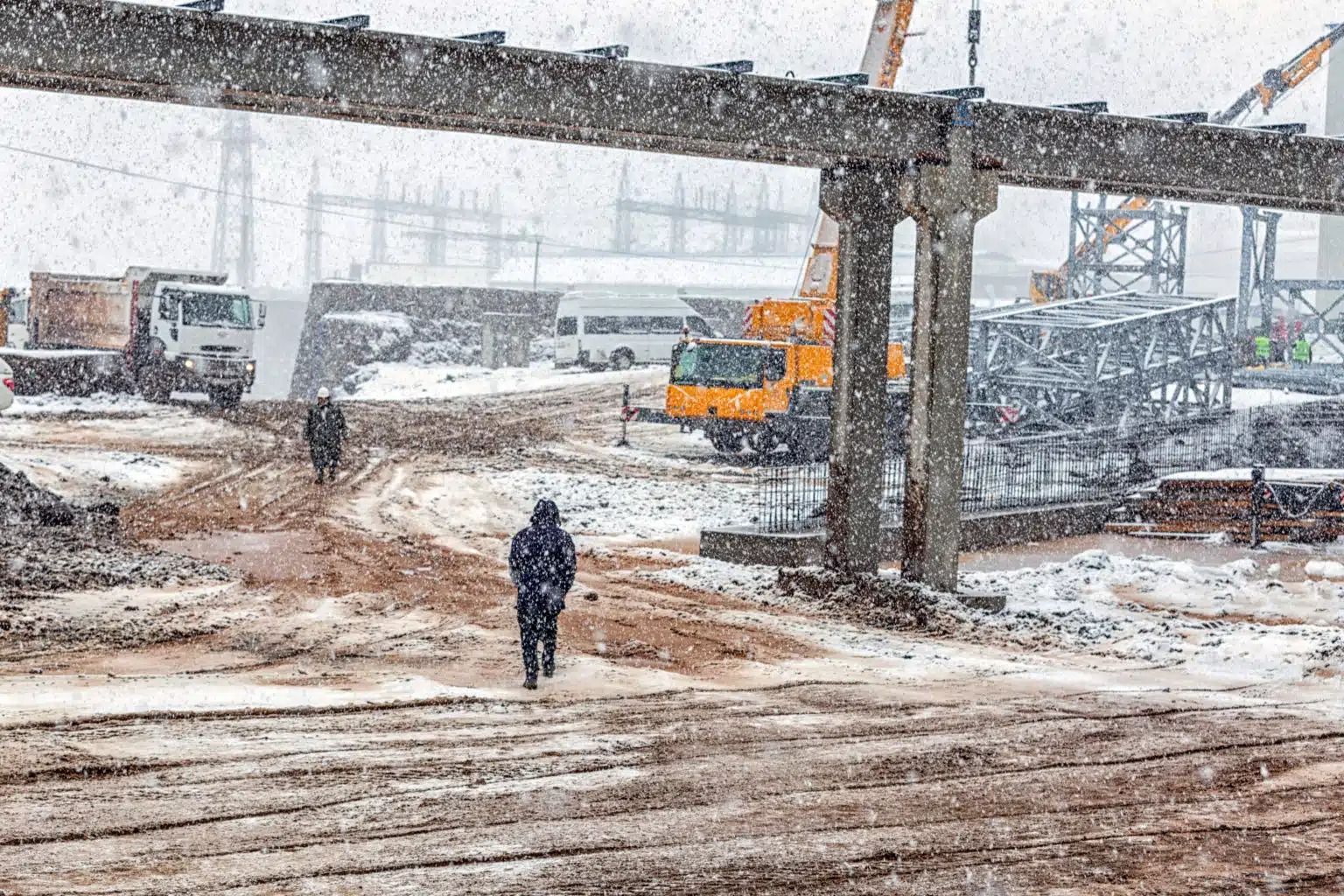Protecting Businesses Against Severe Weather-related Crisis Situations
Protecting businesses against severe weather-related crisis situations is an indispensable aspect of ensuring organizational resilience and sustainability.

Morgan Barrons
Feb 21, 2024
Severe weather-related crisis circumstances are becoming a global hazard to organizations, threatening their operations, financial success, and sometimes even survival. Extreme weather disasters can hit without much notice, leaving businesses subject to a series of difficulties. Examples of these catastrophes include the destructive storms that wreak havoc on coastal regions and the wildfires that swallow entire villages.
Businesses must proactively prepare and defend themselves against the elements since the frequency and intensity of these disasters are increasing in today's fast-changing climatic scenario. Failing to do so will have far-reaching effects, including interruptions to the supply chain, financial instability, and damage to one's image, in addition to immediate bodily danger.
This article dives deep into the subject, examining the many approaches and fixes that might protect companies from the fury of extreme weather. It highlights how important it is to be prepared and resilient and to work together to lessen the effects of major catastrophes.
Protecting businesses against severe weather-related crisis situationsis not simply a choice but a vital requirement for survival and success as we traverse a period of heightened climate instability.
Understanding The Impact Of Severe Weather On Businesses
Beyond just being an annoyance, severe weather may have a profound and long-lasting effect on organizations, posing serious risks to their operations and financial results. Startling economic numbers highlight this effect since weather-related calamities result in billions of dollars worth of damages every year.
These losses cover a broad range, including the interruption of vital company activities and physical damage to property, inventories, and infrastructure. Particularly susceptible are small and medium-sized businesses (SMEs), which frequently face the threat of insolvency following such catastrophes.
All it takes to understand the implications of this entirely is to look at actual case studies of extreme weather occurrences. Natural disasters such as Hurricanes Katrina and Sandy expose the susceptibility of whole towns and sectors to these pressures.
Following them, catastrophic damage, floods, and protracted power outages drove many enterprises to close for good or all. These actual events serve as powerful reminders of how crucial it is for businesses to be proactive in their planning and preparation.
Moreover, the effects of extreme weather occurrences differ according to the particular type of crisis. Hurricanes may produce strong winds and storm surges that can destroy buildings and submerge coastal areas, and floods, whether they occur on their own or as a result of a lot of rain, can endanger companies that are located in low-lying locations.
Drought and intense heat may feed wildfires, which pose a particular threat to companies located in high-risk locations. It is essential to comprehend the unique dangers connected to each kind of severe weather event when developing efficient, customized preparedness plans.
The effects of severe weather on businesses go well beyond the damage that is immediately apparent; instead, it strikes at the very foundation of their sustainability and resilience, compelling them to acknowledge the complex issues these occurrences present and take preventative action to ensure their continued existence.
Ways To Protect Your Business From Climate Change Disaster
Update Employees’ Emergency Plans
Whenever employees work remotely or off-site, it may be challenging to keep track of where they are at all times. However, during a severe weather event, this knowledge is vital. You won't have to waste time later trying to locate staff members if you keep thorough, current records of their residences.
Next, make sure that every employee has a plan in place for where their families will be housed in the event of inclement weather. Make it clear that they might need more room in your firm to wait out the storm.
Staff members may focus on the current issue and feel sure that their families are safe when they have personal emergency plans in place. This enables them to concentrate on carrying out their daily activities even during an emergency.
Be Ready For Potential Power Outages
In the event that your phone lines cut out and you lose power, have backup satellite phones prepared to use and distribute. Verify that the backup power generators you have are both operational and long-lasting. In the event that resources must be diverted to areas of urgent need, be aware of where you might cut back on electricity usage.
If your severe weather emergency plans include backup work sites, keep in mind that in the event that you and your personnel are placed on mandatory lockdown, these places could not be accessible. Have a backup plan prepared.
Each member of your vital staff who works remotely has to have a backup electrical plan of their own. Remember that only some have a satellite phone or backup generator on hand, so make plans appropriately.
Build Up Emergency Supplies Where Possible
Supplies will probably be scarce for a while during a crisis, mainly if your merchants are also negatively hit. Even though it can be challenging to maintain supplies well supplied during the COVID-19 upheaval, you should strive to set aside time now to plan for extreme weather events so that you won't be caught without supplies later.
Consider in advance what extra supplies you might want in case of extreme weather. Think about how these supplies will be kept under check over the next months and what action you can take if supplies start to run low.
Your remote workers could not have access to your emergency supplies, especially when social separation is required. Either provide your staff personal emergency kits, or give them instructions on how to put one together.
Create A Temporary Structure Plan
It might be necessary for you to erect makeshift buildings, like tents, in order to keep things running. As you plan the deployment of temporary buildings, be sure to consider the variables that may provide difficulties.
For instance, wind advisories at lower wind speeds are rarely issued by national meteorological agencies, even though tents can withstand winds of just 25 to 30 mph. Any stronger wind might lift or topple tents, causing damage to necessary supplies and harm to your employees.
Your temporary constructions must be stable, no matter how strong the wind is predicted to be. Tents need to be properly anchored and ballasted. The design and configuration of these buildings should be familiar to the crews erecting the temporary structures.
They should also be informed about any weather dangers, such as lightning, which should be taken into consideration when deciding where to put the temporary buildings and how to arrange them.
Role Of Communication During Crisis
For businesses, communication is crucial and essential during a crisis. It acts as the pivot that has the power to either make things worse or easier for organizations going through difficult times. It is essential to communicate effectively during a crisis for a number of reasons.
First of all, it promotes trust and openness. Businesses build trust with their stakeholders, including customers and workers, when they speak honestly and openly about the current state of affairs, including the difficulties they are facing and the measures they are taking to overcome them. To keep the organization credible, this trust is necessary.
Second, keeping customers and staff safe and healthy depends on prompt and effective communication. During emergencies or crises such as natural disasters, advising on evacuation protocols, safety precautions, and possible hazards helps prevent fatalities and minimize damage.
Thirdly, communication facilitates emotional and perceptual regulation. Emotions are strong during crises, and false information may spread quickly. In order to preserve control and order, effective communication may assist in reducing panic, confusion, and the spread of incorrect information.
Finally, it helps to maintain the organization's standing. Reputational harm from poor communication or being silent during a crisis might take years to heal. Conversely, proactive and compassionate communication may improve the organization's standing by showcasing a dedication to accountability and responsibility.
To put it simply, communication is the lifeline that holds an organization and its stakeholders together during a crisis. It helps them navigate choppy seas, preserve trust, guarantee safety, and protect their reputation. It is an essential tool for crisis management, which emphasizes how crucial it is for companies dealing with serious weather-related emergencies.
How To Protect Your Business From Flooding?
When a storm occurs, flooding may be a major issue, so you should always be ready for the worst, especially if you live in a region that is susceptible to flooding. However, how can a firm get ready for a flood?
Although it may seem apparent, having a strong company flood strategy in place for both the short and long term is the best defense against flooding. The following items should be included in your company's weather-related contingency plan.
Planning For Short-Term Floods
See whether there are any flood alerts in your region by visiting the Environment Agency's website. It's also a good idea to check out the real-time flood warning map; if you notice a warning in your area, you should start making preparations right away. Here's how to get your company ready for an impending flood.
- Create a list of all the relevant phone numbers for your company, including the numbers for your insurance company, gas and electricity suppliers, and other suppliers, and store it in a waterproof container with any other critical papers. Along with the paperwork, keep a fully charged phone and a flashlight.
- Sandbags may be used to seal off any openings for water to enter your company, including windows, doors, and air bricks.
- Anything essential to the operation of your company, such as inventory, servers, computer hardware, and the box with vital numbers, should ideally be moved upstairs or as high off the ground as feasible.
- Try raising any furniture and refrigerators that you can't take upstairs or that you still need to run your business on a daily basis off the ground. In order to aid in the drying process when the flooding starts to recede, it's also a good idea to move them away from external walls.
- In the event of impending flooding, disconnect all electrical devices, shut off your gas, power, and water supply, and avoid going into any standing water while the electricity is still on or uncertain.
Long-Term Planning For Floods
The likelihood is that if you've ever experienced flooding, you will eventually run into floodwaters once more. Thus, it becomes crucial to establish long-term strategies to safeguard your company from floods in the future. Here's how to make long-term plans:
- Ceramic tiles or sealed wood should be used in place of any carpets downstairs.
- Use water-resistant sealant on doors, windows, and skirting boards, and install flood skirts on any water entrance points, such as airbricks and doors.
- Elevate electrical outlets to the highest point on the wall.
- Apply a chemical damp-proof course to walls by plastering them with waterproof lime plaster.
- In order to prevent water from flowing back up pipes and water outlets, install one-way valves to them and regularly check drains for obstructions, which can worsen increasing water levels.
- It makes sense to relocate to an upstairs room if you work from home and utilize a downstairs room for your office.
- You may take a few extra steps to prepare for floods in the long run. Moving upstairs is worthwhile if you can if you work from home and utilize a downstairs room for your office.
- While being ready for the worst might help lessen the effects of flooding, it cannot totally shield your company from the potentially disastrous effects of flood damage.
Because of this, you must get high-quality flood insurance. You need to make sure that your insurance will pay for any damage or destruction caused by floods to your company's property and equipment and that your insurer can handle handling claims.
How To Protect Your Business From Storm Damage?
Your commercial property may experience a variety of issues as a result of strong winds and heavy rain, including roof tiles being blown off the building, gutters bursting, and issues with moisture.
Repairing the damage that a hurricane has caused to a commercial property may be an expensive and time-consuming endeavor. The most effective strategy to shield your company from the effects of a hurricane is to take all precautions necessary to ensure that the building's components are as well protected as they possibly can be.
Making sure that everything in the building is in working order is the most effective strategy to shield your company from the effects of storm damage; thus, keep an eye out for the following things.
- Check that all of the roof tiles are in place and replace any that are cracked or missing from the roof.
- Check that all of the gutters are securely fastened and that any obstructions in them have been removed.
- Maintain a closed and secure status on all of the exterior doors, windows, and gates.
- Remove or secure all outside furniture and decorations, as well as any fences or fence posts that may be exposed.
- If it has been forecast that there will be heavy winds in your location, then you should be sure that any corporate cars, vans, or staff vehicles are parked in a secure place away from any trees and the appropriate space.
- Make sure that any corporate signage, outside seating, and essentially anything else that is not fastened to the floor is brought inside. This will prevent the winds from picking them up and causing any damage to the property.
- If you own the building that your company operates out of, you must make the necessary arrangements. Still, if you rent, the landlord may be responsible for making such arrangements.
Doing some research in advance to prepare for inclement weather can assist in ensuring that you are aware of exactly what your responsibilities are as the owner of a business, as well as what you need to put in place to protect the building, your employees, and yourself in the event of inclement weather.
What To Do After The Crisis?
In the event that a natural disaster has an impact on your company, the following procedures can help restore operations.
Check With The Emergency Personnel To See Whether It Is Okay To Go Back.
Verify with the local police and fire department that it is okay to go back inside the building and that the surrounding area is no longer in any danger before you do so.
Investigate Any Potential Dangers
Before letting any employees or customers inside the facility, you should check to make sure that there are no hazards present, such as broken power lines, standing water, leaking gas, falling trees, or any other potential hazards.
Assess The Damage
Your crisis management team will want to examine the facilities in order to assess the damage, determine whether or not repairs are necessary, and determine whether or not to make an insurance claim. If there is any damage, pictures should be taken.
Frequently Asked Questions
Why Is It Crucial To Shield Enterprises From Extreme Weather?
By safeguarding companies, financial losses are reduced, and continuity is guaranteed.
How Can Companies Determine How Vulnerable They Are To Extreme Weather?
Risk assessments and analysis of historical weather data may be used by businesses to determine susceptibility.
What Essential Components Need To Be Included In A Disaster Preparation Plan?
A plan must comprise many elements, such as evacuation plans, communication techniques, and an emergency response team.
Final Thoughts
Protecting businesses against severe weather-related crisis situations is not only necessary for companies to survive but also strategically vital to shield them against severe weather-related crisis scenarios. Severe weather occurrences have a significant effect on enterprises, including the possibility of closure, operational interruptions, and financial losses.
However, companies may significantly improve their capacity to physically and symbolically weather the storm with careful planning, investment in resilience measures, cooperation with local authorities and communities, and ongoing adaptation.
In an increasingly uncertain environment, organizations may position themselves for long-term success and sustainability by acknowledging the complexity of these problems and adopting proactive measures to reduce risks.



